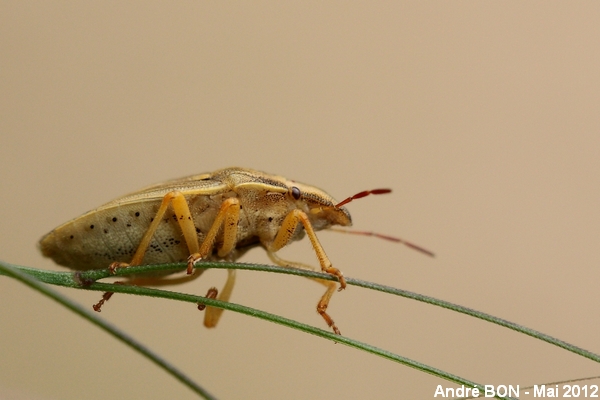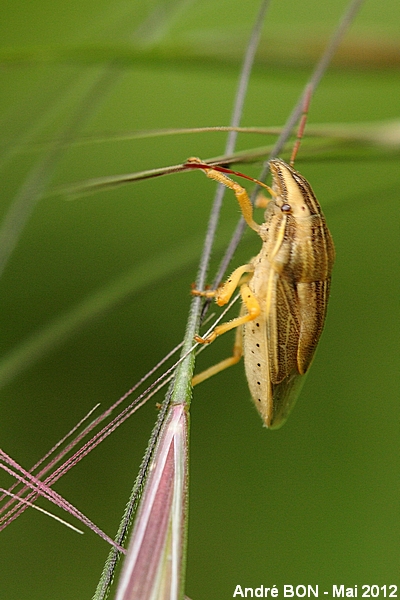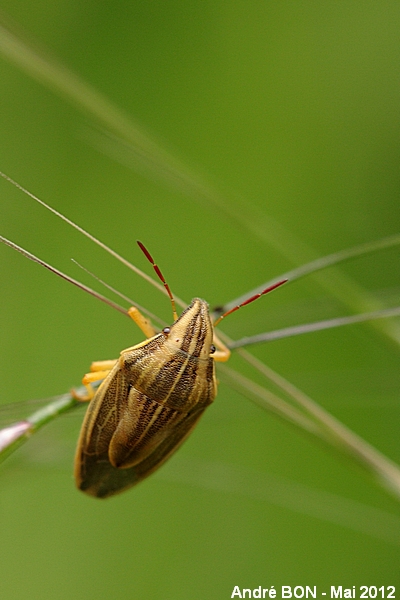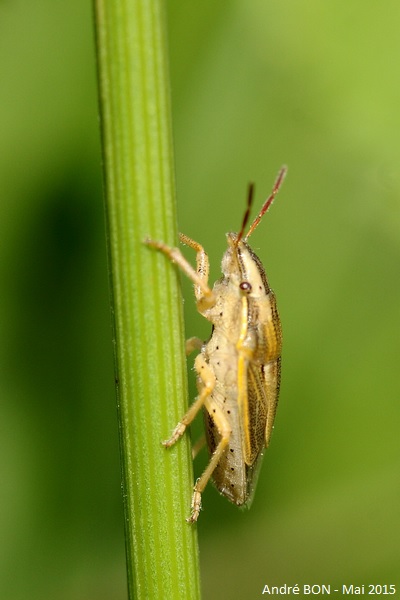



| Bishop's Mitre (Aelia acuminata (Linnaeus, 1758)) |




|
|
Scientific name: Aelia acuminata (Linnaeus, 1758) Common name: Bishop's Mitre French name: Punaise des blés, Punaise nez-de-rat Order: Heteroptera Family: Pentatomidae Wingspan : 7 to 10 mm Biotope: Wheat fields, meadows, waste lands, dunes. Geographic area: Europe, Asia except extreme northern regions, North Africa. Observation period : April to the first very cold days. |
The Bishop's Mitre has a lengthy fusiform body without any angulous part on the head and on the pronotum. It shows low contrasted yellowish and greyish brown longitudinal stripes. The main criteria to tell this species apart is the presence of two well marked black dots located at mid length on the underside of the middle and hind femora. The length of the second article of the antennae is about half of the length of the third article. The Bishop's Mitre can be a pest for wheat crops. It over winters as an adult, often hidden under the litter. Here is some additional information to tell similar species apart: Aelia rostrata is a slightly larger size. The colours are more contrasted. The second and third article of the antennae are about the same size. The middle and hind femora only show one black dot (maybe sometimes missing, but never two dots). The side view of the head often shows some kind of a tooth or bump ( which may be missing on some subspecies). Aelia notata is very similar to Aelia rostrata but is a smaller size, slightly smaller than Aelia acuminata. Aelia klugii is a small size with contrasted colours. It does not show any tooth on the side of the head nor any black dots on the femora. You can recognize it by the kind of swollen extension at the front of the head. It is visible from above. |
| [To know more about the Bishop's Mitre] [Next picture] [Top] |

|
I am used to rather often observing Bishop's Mitres but it is always very difficult to see the eventual presence of black dots on the under side of the femora. I have been able to do it with this specimen perched upon high grasses. You can see two black dots under the middle femur and three black dots under the hind femur. |
| [To know more about the Bishop's Mitre] [Next picture] [Previous picture] [Top] |

|
Here is another view of the same specimen. With this angle of view you can only see one dot under each femur … |
| [To know more about the Bishop's Mitre] [Next picture] [Previous picture] [Top] |

|
Here is an upper side view. I have seen, on some specialized forums, that experts are able to tell this species apart with a simple picture like this one. I still have to make progress. |
| [To know more about the Bishop's Mitre] [Previous picture] [Top] |

|
This bug has been very kind to let me have a look under its body and I clearly see two dots on the mid femur and two dots on the hind femur. |